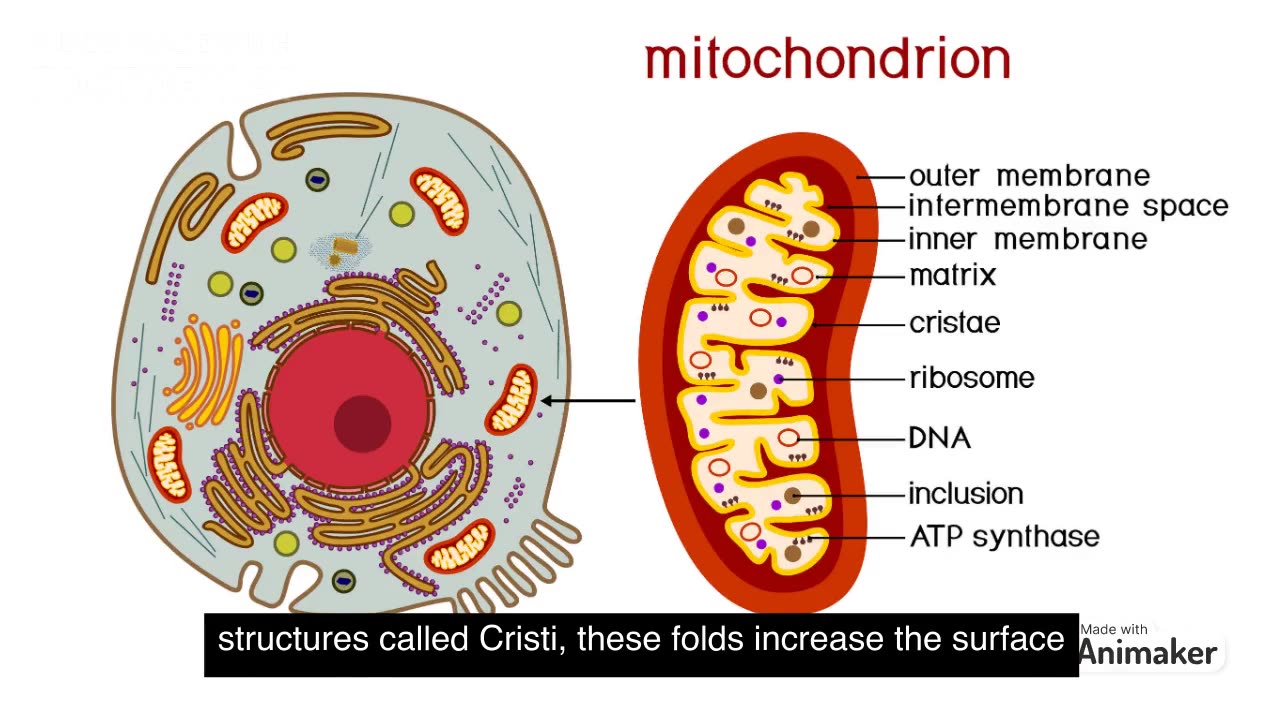Premium Only Content

what is Mitochondria ,structure and function of Mitochondria #viral #2023 #education#learning
Asalamualaikum EveryOne......!
Welcome to our education channel! Here, we strive to provide a comprehensive platform for learning and sharing knowledge on a wide range of subjects. Whether you're a student, educator, or simply someone with a thirst for knowledge, our channel is designed to cater to your intellectual curiosity.
WHAT IS MITOCHONDRIA?
Mitochondria are organelles found in the cells of most eukaryotic organisms. Often referred to as the "powerhouses" of the cell, mitochondria play a crucial role in cellular respiration and energy production. They are often described as the cell's energy generators or factories.
Here are some key features and functions of mitochondria:
Structure: Mitochondria have a distinct double-membrane structure. The outer membrane acts as a protective barrier, while the inner membrane is highly folded, forming structures called cristae. These folds increase the surface area available for chemical reactions. The innermost space within the inner membrane is called the mitochondrial matrix.
ATP Production: Mitochondria are responsible for generating adenosine triphosphate (ATP), which is the primary energy currency of cells. The process of ATP production occurs through aerobic respiration in the presence of oxygen, specifically in a series of reactions called the electron transport chain (ETC) and oxidative phosphorylation. This process takes place on the inner mitochondrial membrane and within the mitochondrial matrix.
Metabolic Functions: In addition to ATP production, mitochondria are involved in other metabolic processes. They are essential for the breakdown of carbohydrates, fats, and amino acids, which are used as fuel sources for energy production. These organelles are also involved in the synthesis of certain molecules, such as heme (a component of hemoglobin) and some amino acids.
Calcium Regulation: Mitochondria play a role in regulating calcium ion concentrations within the cell. They can store and release calcium ions, which are crucial for various cellular processes, including muscle contraction, cell signaling, and apoptosis (programmed cell death).
Cell Signaling: Mitochondria are involved in cell signaling pathways. They produce reactive oxygen species (ROS) as byproducts of ATP production, which can act as signaling molecules. ROS can participate in cellular signaling pathways involved in processes like apoptosis, inflammation, and the regulation of gene expression.
It is important to note that mitochondria have their own DNA, known as mitochondrial DNA (mtDNA). This unique feature suggests that mitochondria have their own evolutionary origin and are believed to have originated from a symbiotic relationship between early eukaryotic cells and ancestral bacteria.
-
 5:28
5:28
Zach Humphries
1 day ago $10.21 earnedMAJOR STELLAR XLM PARTNERSHIP ANNOUNCED!
36.5K3 -
 4:51:51
4:51:51
MattMorseTV
11 hours ago $20.86 earned🔴Gaming Sunday🔴
71.3K12 -
 24:24
24:24
Jasmin Laine
12 hours ago“Their BIGGEST Mistake Yet”—U.S. Officials TORCH Carney in Brutal Report
60.7K66 -
 5:15:53
5:15:53
Rallied
10 hours ago $10.03 earnedWARZONE SOLO CHALLENGES ALL DAY
54.8K -
 2:00:33
2:00:33
Joker Effect
8 hours agoSoo @MrBeast charity, is it legit? XenaTheWitch got attested? Lets talk about it! HOW TO GO VIRAL.
44.4K5 -
 27:01
27:01
TheRoyaltyAutoService
16 hours ago $4.85 earnedAnother Shop Replaced The Timing Belt & Fuel Injectors On This Honda Pilot… Now It Has No Power!
51.3K3 -
 10:14:25
10:14:25
GritsGG
18 hours agoRanked Crim 2! Most Wins 3390+ 🧠
92.7K2 -
 3:12:37
3:12:37
IsaiahLCarter
1 day ago $7.61 earnedJonah O. Wheeler: In Defense of Reality || APOSTATE RADIO #026
52.4K2 -
 9:17:16
9:17:16
Cewpins
12 hours agoSmoke Sesh🔥Gaming???💨420🍃!MJ !giveaway
36.7K14 -
 8:48:45
8:48:45
Phyxicx
10 hours agoShin Megami Tensei - Part 5 - 8/13/2025 | Chaos Route | Expert Difficulty
29.7K